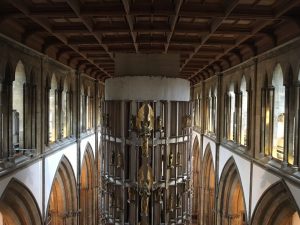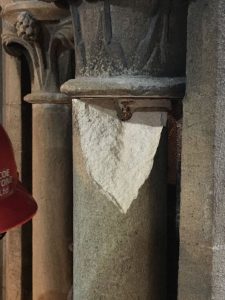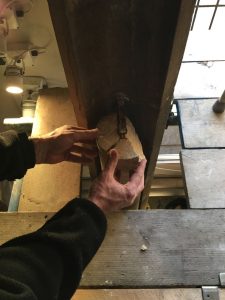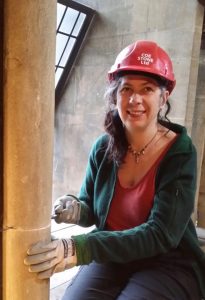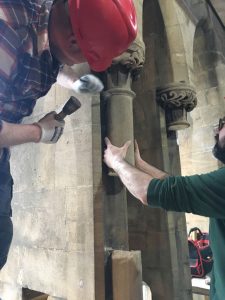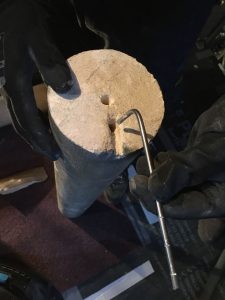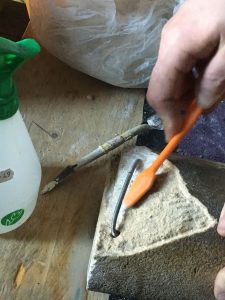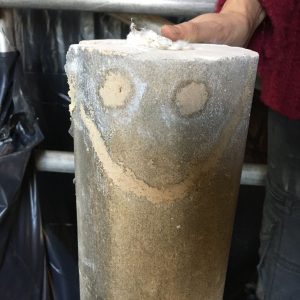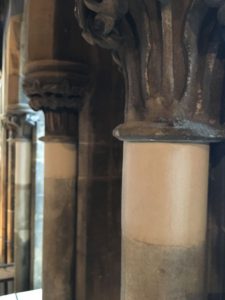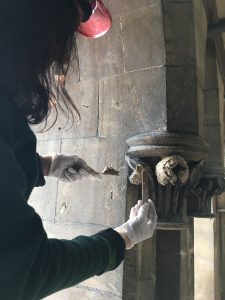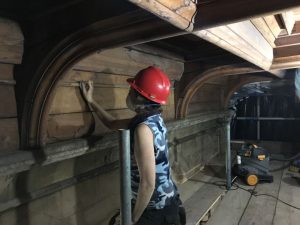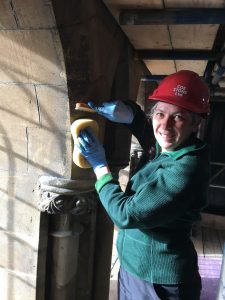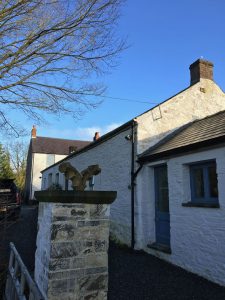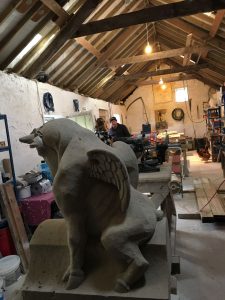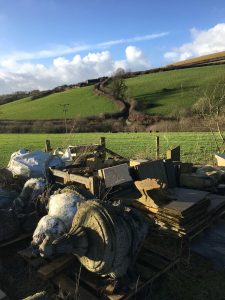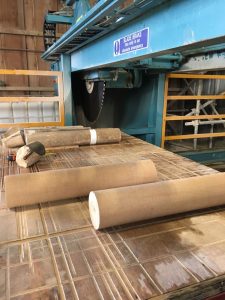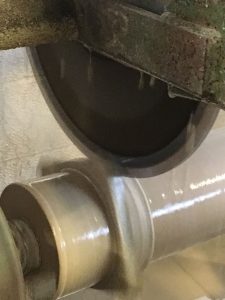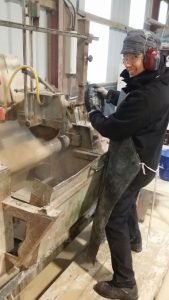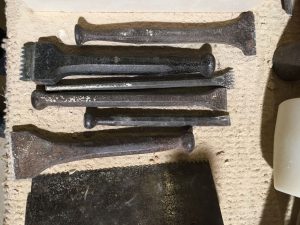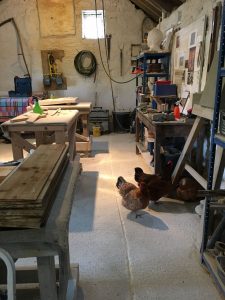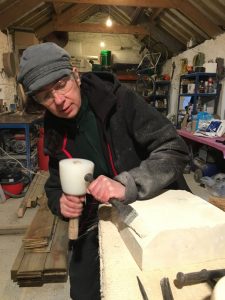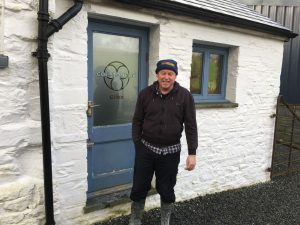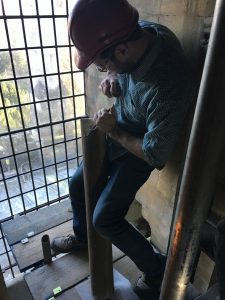A Little Love for Llandaff
3 May 2018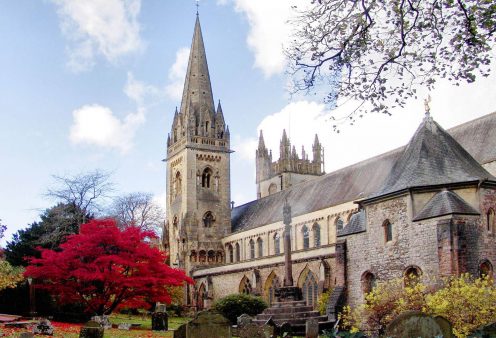
This winter, I had the privilege of working with a team of stonemasons and conservators. Coe Stone Ltd. Masonry: Carving & Conservation (http://olivercoe-com.stackstaging.com/) were hired on to perform conservation work on Llandaff Cathedral in Cardiff, and I joined their team for just over one month, over the winter break of my MSc in Conservation Practice at Cardiff University. It was a huge job that began in the summer of 2017, that focused on the clerestory.
The clerestory was built with a combination of iron, brass, and on a rare occasion wooden dowels embedded into the Bath stone. These dowels or rods served to keep posts aligned along the vertical plane, and pulled taut against the wall. The problem with this set of compound objects was that water entered the system. In 1941, the roof was blown off part of the cathedral when a German landmine exploded outside the south aisle, and it remained missing for over a decade. (https://www.llandaffcathedral.org.uk/history/) The ferrous metal corroded, and in some cases quite voluminously. This caused the stone to crack, and several pieces fell to the floor. Since falling stone is definitely a public safety hazard, the stakeholders decided that conservation efforts could wait no more.
The conservation solution was to cut out all of the posts from the clerestory, remove the existing pins, and replace them with stainless steel. The steel will not corrode the way that iron does and the pressure on the stone will be relieved.
Chips in the stone were repaired wherever possible, and where this was not safe for the stone or the public, new posts were manufactured and inserted.
As a tall scaffold was erected to do the work, and there were no plans to do so again in the next few decades, we also took the opportunity to sand the wooden ceiling and hand wash the walls. Years of burning candles in the cathedral, dirt, and water leaks had left their mark and were addressed as part of this conservation effort.
It is here that the story takes me to Oliver Coe’s workshop in West Wales. Oli often spent several days working back at his workshop, cutting new posts for the cathedral. He dedicated one of those days to teaching Ellen Scrimgeour and myself, the two novices on the job, about stone masonry.
We drove out early in the morning on a day that could not decide if it would be stormy or sunny. As we got closer, I could hardly contain my enthusiasm. The idyllic pastoral vistas of rolling green hills dotted with sheep, accented by stone walls, brought a beaming smile to my face. The stone house that Oli’s workshop occupies is hundreds of years old, white-washed with lime, and has exposed timbers on the inside. For someone who loves built heritage, this place was pure magic.
Adjacent to the studio stands an industrial shed where the monster scale electric tools live, including the stone lathe and the saw that we used to cut several posts for the cathedral. I got to operate the lathe myself, which was fun and exciting. It is most humbling to realize that the stone I formed that day was integrated into Llandaff, and will surely outlive me.
After lunch, when the work for Llandaff was done, Ellen and I practiced forming stone the old fashioned way, using hand tools. The studio has all the hand tools that a mason of yesteryear would have.
We each got a block of stone to chisel away at, shaving off angles of the block to slowly round the rectilinear block. Oli showed told us what tools were used for what, how they differed one from another, and how to use them. It was a great experience.
Oliver Coe and Thom Evans were brilliant to learn from. They took the time to explain the details of what needed doing and how, and welcomed questions with enthusiasm. They showered us with books from their private libraries so we could read about the techniques and materials that we were using. Under their careful guidance, I learned a ton about conservation of built heritage, how stone behaves, lime mortars, and much more. I thank them both. I also want to thank to Izaak Hudson of DHV Architects, and the folks at Llandaff for their patience and cooperation while the work was in progress.
~ Katya Madrid
Photo credit and © Katya Madrid and Ellen Scrimgeour
Featured image from: http://www.visitcardiff.com/seedo/llandaff-cathedral/
- March 2024 (1)
- December 2023 (1)
- November 2023 (2)
- March 2023 (2)
- January 2023 (6)
- November 2022 (1)
- October 2022 (1)
- June 2022 (6)
- January 2022 (8)
- March 2021 (2)
- January 2021 (3)
- June 2020 (1)
- May 2020 (1)
- April 2020 (1)
- March 2020 (4)
- February 2020 (3)
- January 2020 (5)
- November 2019 (1)
- October 2019 (1)
- June 2019 (1)
- April 2019 (2)
- March 2019 (1)
- January 2019 (1)
- August 2018 (2)
- July 2018 (5)
- June 2018 (2)
- May 2018 (3)
- March 2018 (1)
- February 2018 (3)
- January 2018 (1)
- December 2017 (1)
- October 2017 (4)
- September 2017 (1)
- August 2017 (2)
- July 2017 (1)
- June 2017 (3)
- May 2017 (1)
- March 2017 (2)
- February 2017 (1)
- January 2017 (5)
- December 2016 (2)
- November 2016 (2)
- June 2016 (1)
- March 2016 (1)
- December 2015 (1)
- July 2014 (1)
- February 2014 (1)
- January 2014 (4)
